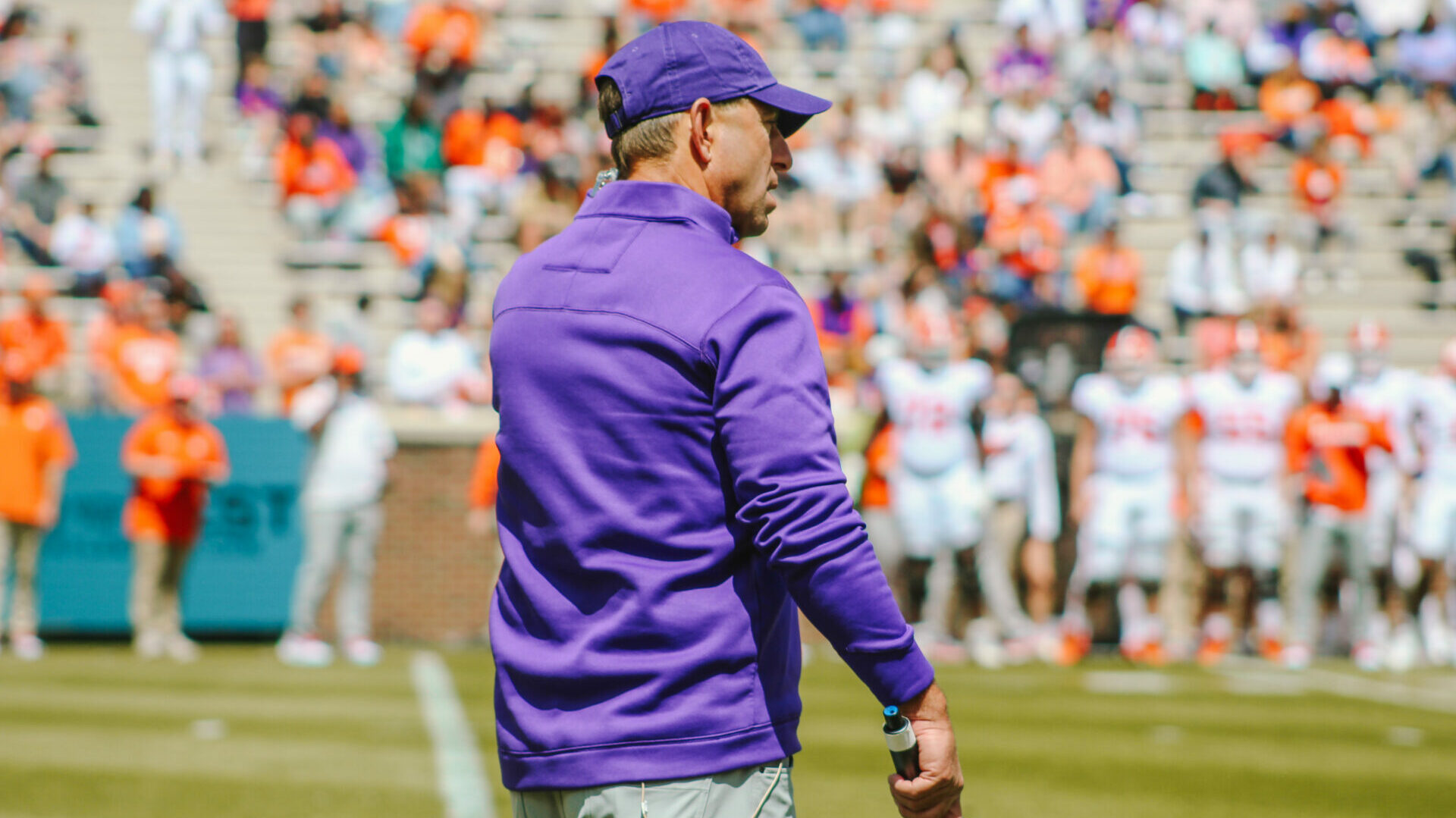In the spring of 1938, the Clemson Tigers engaged in their first-ever spring exhibition game, in a meaningless matchup with the Duke Blue Devils. Duke defeated Clemson 30-24, in what reporters dubbed a “seesaw battle” of a game. Duke halfback and defensive back George McAfee dominated the game, with three rushing touchdowns and a pick-six. McAfee went on to win three NFL championships and a World War in the 1940s, while Clemson continued their annual spring exhibition, eventually moving to an “Orange vs. White” format in 1971.
A lot has changed since 1971, and new transfer regulations have made the spring game much less advantageous to some schools. Ohio State, Oklahoma, USC, Texas, and fifteen other Power Five programs have done away with the match altogether. With players able to transfer in the spring and play in the fall, coaches are wary of allowing other teams to watch their players scrimmage each other in the spring.
For Clemson, canceling the game was never an option:
“I cannot overstate or appropriately quantify how special it is to be able to have an environment and an opportunity to have a game feel. That’s the best we can do, and we won’t get that again until we play LSU.” – Dabo Swinney
Dabo has consistently preached mentality throughout his 23-year tenure and believes this game goes a long way toward developing young players:
“The confidence that can come from that (the players) can really grow. I just don’t take it for granted because I know it’s not like that forever.”
The game allows players to gain reps in a simulated game environment, without it affecting the success of the team’s season. Such a tool is valuable in terms of adding confidence but also helps coaches analyze talent and identify contributors who may not have enough of an opportunity in the fall.
Dabo has received backlash for his continuation of the exhibition, with most of the criticism coming out of concern for the players. Football is a physical sport, and having players engage in a full-contact scrimmage in April can be seen in a poor light by some. Clemson is aware of that reality and took plenty of precautions to alleviate the risk. Plenty of impact players, including TJ Moore, Bryant Wesco, and Antonio Williams, were deemed “no contact.” Of course, no quarterbacks were allowed to be hit, and many players who had been banged up throughout the week saw little to no playing time.
While some have their criticisms, Coach Swinney’s decision has largely been appreciated, especially by members of the team:
“It means a lot to me because not only do we put in a lot of work behind the scenes, it’s also good to have the fans come out and still have that type of gameday atmosphere.” – TJ Parker






